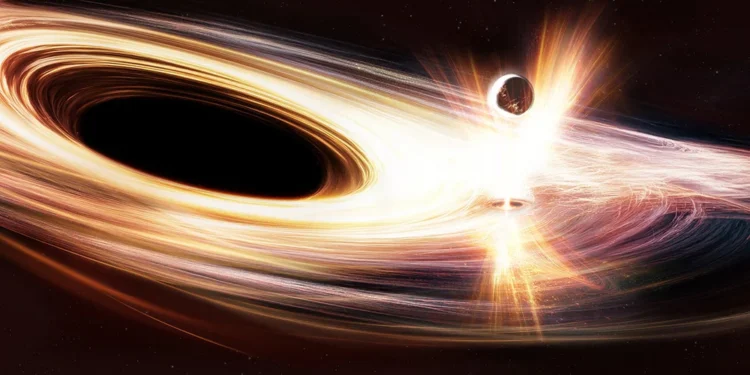When we look up at the night sky, it’s easy to feel that space is a static, unchanging expanse. However, recent events have reminded us that the universe is anything but quiet. Astronomers recently observed a spectacular and exceptionally rare phenomenon—a supermassive black hole awakening in real-time. Located in the heart of galaxy SDSS1335+0728, roughly 300 million light-years away, this black hole, affectionately named Ansky, suddenly sprang to life after decades of inactivity.
The First Signs of Activity
In December 2019, astronomers caught their first hint that something extraordinary was happening within SDSS1335+0728. Initially, telescopes recorded a sudden spike in optical brightness emanating from the galaxy’s core. This intense burst of visible light signaled astronomers that a previously quiet supermassive black hole was waking up, marking the onset of a fascinating period of astronomical research.
To better understand this phenomenon, researchers quickly initiated observations using a fleet of powerful telescopes, including ESA’s XMM-Newton observatory and NASA’s Swift, NICER, and Chandra space observatories. Each observatory is specifically equipped to detect different types of radiation emitted by black holes, providing a comprehensive picture of this incredible event.
As astronomers tracked Ansky over the following months, the data began painting an astonishing picture. The black hole was exhibiting unique and intense flares of X-ray radiation at surprisingly regular intervals—a behavior known as quasi-periodic eruptions, or QPEs.
Unraveling the Mystery of Quasi-Periodic Eruptions
Quasi-periodic eruptions (QPEs) represent powerful and repetitive bursts of X-ray emissions. While astronomers had previously identified a handful of galaxies exhibiting QPE behavior, Ansky’s events differed significantly. Typically, QPEs are short-lived, intense flares caused by objects or stars venturing too close to the black hole, being torn apart in what is known as a tidal disruption event (TDE). However, Ansky’s eruptions challenged these traditional explanations by their unprecedented magnitude and regularity.
Each eruption from Ansky is extraordinarily energetic, roughly ten times longer and ten times more luminous than previously observed QPEs. Even more intriguing is their rhythmic nature—each flare lasts about 4.5 days and repeats roughly every 25 days. Such a clear periodic pattern was unprecedented and initially baffling, suggesting that astronomers had encountered something fundamentally new.
Going Beyond Tidal Disruption Events
Because Ansky did not show clear evidence of destroying a star—a common explanation for similar events—astronomers needed to consider alternative scenarios. Instead of a star being shredded apart, it’s possible a different interaction is causing these powerful eruptions. Scientists speculate that a smaller, compact celestial body, such as a neutron star or white dwarf, might be orbiting the black hole and repeatedly passing through its surrounding accretion disk. Each passage could create shockwaves in the disk, triggering the observed intense bursts of X-rays.
This scenario is akin to a speedboat cutting repeatedly through calm water—each pass creates strong waves or shocks. Similarly, repeated orbital interactions within the accretion disk would cause the periodic X-ray flares astronomers observe. Although this hypothesis matches the observed characteristics, further observations are necessary to confirm it definitively.
The Scientific Importance of Observing Ansky
The unique properties of Ansky’s QPEs make it an exceptional natural laboratory for astrophysics. Studying these recurring outbursts helps scientists better understand how black holes feed, grow, and influence their surrounding galaxies. This real-time observation can refine existing models, shedding light on how accretion disks function, how material behaves in extreme gravitational environments, and how energy is produced during these intense cosmic events.
Moreover, observing Ansky provides rare opportunities to test theoretical predictions against actual phenomena. For instance, current astrophysical models have trouble fully explaining the magnitude and regularity of Ansky’s QPEs. This discrepancy encourages researchers to explore innovative ideas and theories, pushing our scientific understanding forward. Every piece of data astronomers collect from Ansky is another critical step toward comprehending some of the universe’s most violent and enigmatic processes.
Future Prospects: Gravitational Waves and ESA’s LISA Mission
The implications of observing Ansky extend beyond electromagnetic radiation. Events like these are predicted to generate gravitational waves—ripples in spacetime first detected in 2015. Upcoming space-based gravitational wave detectors like ESA’s Laser Interferometer Space Antenna (LISA), scheduled for launch in the next decade, could detect these subtle waves, providing an entirely new observational channel for understanding black hole phenomena.
By combining electromagnetic observations (like those from X-ray telescopes) with gravitational-wave detections, astronomers will gain a multi-dimensional view of cosmic events. Such multi-messenger astronomy could revolutionize our understanding of not only black holes but also the formation and evolution of galaxies and the behavior of matter under extreme conditions.
Continued Monitoring: Why It Matters
To fully exploit the opportunity Ansky provides, continued monitoring and observation across multiple wavelengths is essential. Because these QPE events are periodic, ongoing observation is crucial to catch any variations or new behaviors. Dedicated monitoring could reveal subtle changes in timing or intensity, offering further clues about the underlying mechanisms driving these remarkable eruptions.
Furthermore, detailed, long-term observations will inform astronomers whether similar events could be happening unnoticed elsewhere in the universe. Identifying and studying more cases like Ansky would dramatically enhance our knowledge of black holes and their interactions with their surroundings.
Conclusion: An Exciting New Chapter in Black Hole Research
Ansky’s awakening marks a turning point in astronomical observation. For the first time, scientists are witnessing a previously dormant black hole suddenly and spectacularly become active, opening an entirely new chapter in our exploration of the cosmos.
Reference:
Discovery of extreme Quasi-Periodic Eruptions in a newly accreting massive black hole



















